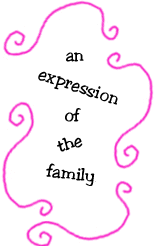 I bought a house! I’m moving this month from my basement apartment to an above-ground structure with more windows and space than I know what to do with. What kind of house, you ask? A little bungalow, built in 1923 ~ the year of this exerpt from the book Economics of the Family.
I bought a house! I’m moving this month from my basement apartment to an above-ground structure with more windows and space than I know what to do with. What kind of house, you ask? A little bungalow, built in 1923 ~ the year of this exerpt from the book Economics of the Family.
1923: The Kind of House
![]() It is a self-evident fact that the house should fit the size, taste, and purse of those who live in it. Once the house is built, its architectural style is fixed and to a very large extent its interior its interior plan and arrangement, unless extensive changes are made in remodelling. Important as the exterior appearance and style of the building may be, the interior plan and arrangement have a much greater interest to the persons who live in the house. The number and arrangement of rooms in their relation to the number of persons in the family and the work connected with keeping the house in order have a considerable influence upon the actual living conditions.
It is a self-evident fact that the house should fit the size, taste, and purse of those who live in it. Once the house is built, its architectural style is fixed and to a very large extent its interior its interior plan and arrangement, unless extensive changes are made in remodelling. Important as the exterior appearance and style of the building may be, the interior plan and arrangement have a much greater interest to the persons who live in the house. The number and arrangement of rooms in their relation to the number of persons in the family and the work connected with keeping the house in order have a considerable influence upon the actual living conditions.
Even though the family does not build its own house, and cannot find the house or apartment that is satisfactory from every viewpoint, the house still is, in a certain sense, an expression of the family. The house may be large or small, it may be of good or poor construction, in good or poor repair, well adapted or poorly adapted to the family, but in every case it takes on a certain appearance that expresses to some extent the standards and ideals of the family living
in it.![]()
Source: Taber, C. W. and Ruth A. Wardall. Economics of the Family. Philadelphia: J. B. Lippincott Co.,1923.
~ p. 166 ~